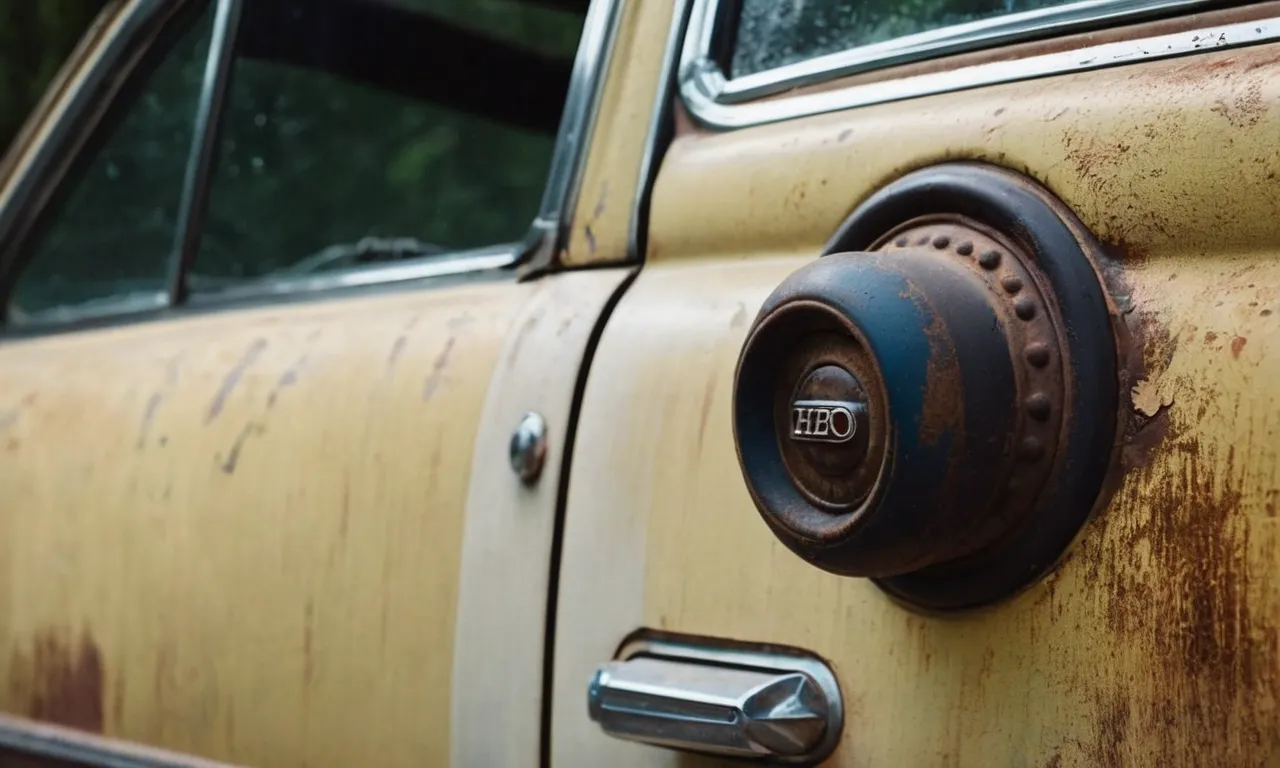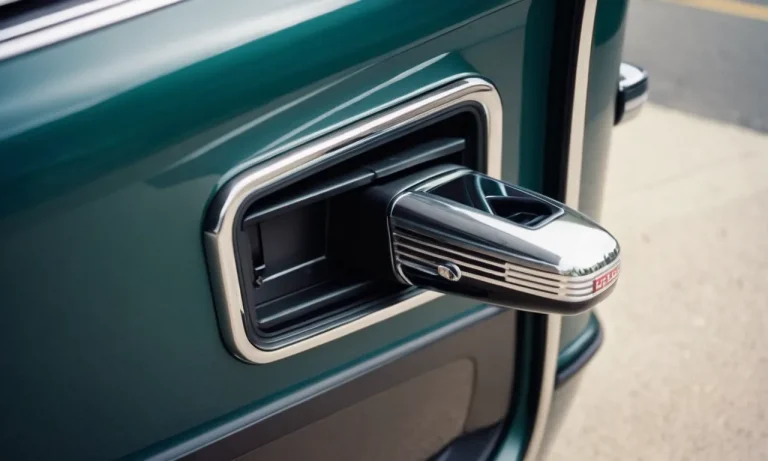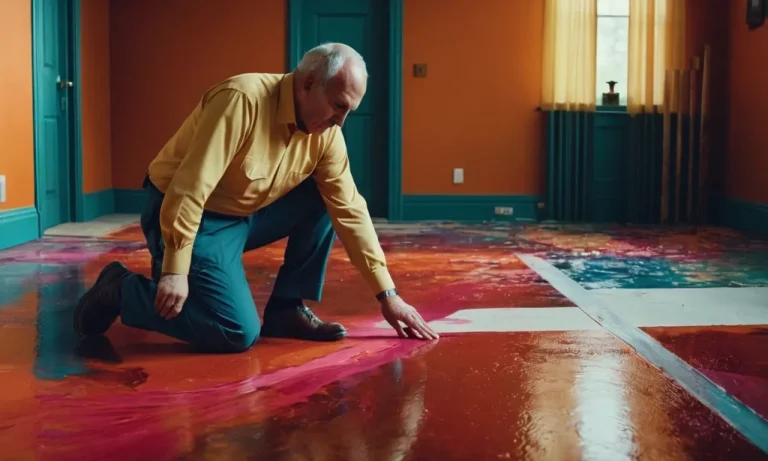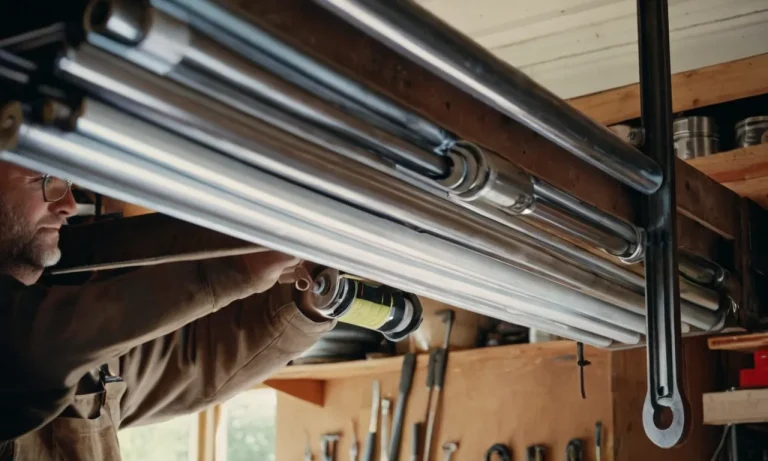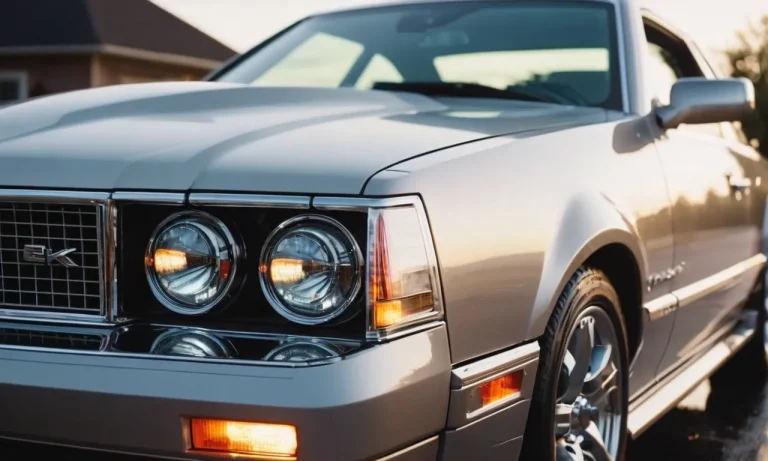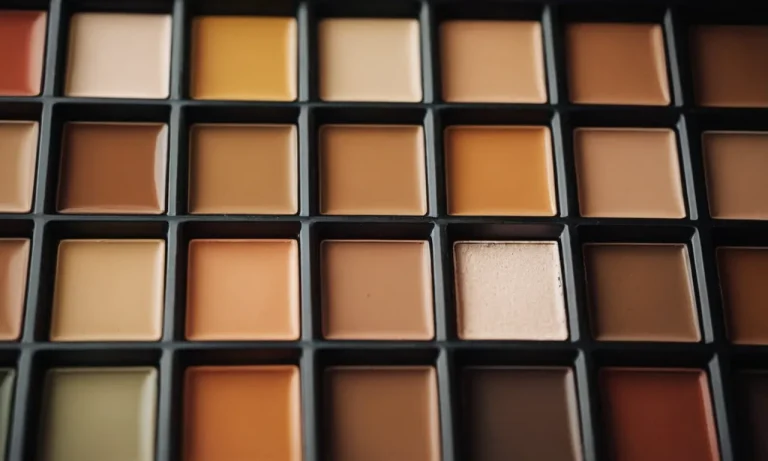What Causes Stress Cracks In Car Paint And How To Fix Them
If you’ve noticed spiderweb-like cracks in your car’s paint, you’re not alone. Stress cracks in paint are a common issue for car owners. These annoying cracks can spread over time and make your car look old before its time.
If you’re short on time, here’s a quick answer to your question: Stress cracks form when the paint layer itself breaks down from age, sun exposure, temperature changes, and normal vehicle movement. While stress cracks don’t harm the metal underneath, they are unsightly.
Retouch paint pens can hide them temporarily but the only permanent fix is to repaint the affected area.
In this comprehensive guide, we’ll discuss what causes stress cracks in automotive paint, how to tell if you have them, temporary and permanent repair options, and tips for preventing cracks in the future.
What Causes Paint Stress Cracks?
Paint stress cracks, also known as spider webbing or spider cracks, are a common issue that many car owners face. These cracks appear as fine lines or a network of small cracks on the car’s paint surface.
While they are unsightly, it is important to understand what causes them in order to effectively address the issue.
Chemical breakdown of paint over time
One of the main causes of paint stress cracks is the natural breakdown of the chemical composition of the paint over time. As the paint ages, it becomes more brittle and less able to withstand the stresses and strains that the car’s exterior is exposed to.
This can lead to the formation of stress cracks, particularly in areas where the paint is thinner or has been compromised.
Frequent temperature fluctuations
Temperature fluctuations can also contribute to the formation of stress cracks in car paint. Rapid changes in temperature, such as going from extreme heat to cold or vice versa, can cause the paint to expand and contract.
Over time, this expansion and contraction can weaken the paint and create stress cracks. It is worth noting that extreme temperature changes can also affect the underlying layers of the car’s exterior, potentially exacerbating the issue.
Normal vehicle movement and vibration
Every time a car is driven, it experiences movement and vibration. This constant motion can put stress on the paint, especially in areas where the paint is subject to frequent flexing and bending. The repeated stress can cause the paint to crack and form spider web-like patterns.
This is particularly common in areas such as the hood, trunk, and doors, which are more prone to movement.
Prolonged sun/UV exposure
Exposure to sunlight and ultraviolet (UV) rays can also contribute to the development of stress cracks in car paint. Prolonged exposure to the sun’s rays can cause the paint to fade and deteriorate, making it more susceptible to cracking.
Additionally, UV rays can weaken the chemical bonds in the paint, making it more prone to stress cracks.
It is worth mentioning that the combination of these factors can further increase the likelihood of stress cracks in car paint. For example, a car that is exposed to frequent temperature fluctuations and prolonged sun exposure may be more prone to developing stress cracks.
Additionally, certain paint colors, such as darker shades, may be more susceptible to stress cracks due to their ability to absorb and retain heat.
To prevent and fix stress cracks in car paint, it is important to take proactive measures such as regularly cleaning and maintaining the paint, using protective coatings or sealants, and parking in shaded areas whenever possible.
In cases where the damage is already present, seeking professional assistance from an auto body shop or a paint specialist may be necessary to effectively repair and restore the paint.
Signs You Have Stress Cracks
Stress cracks in car paint can be frustrating and unsightly. They often appear as thin spiderweb-like lines on the surface of the paint. These cracks can be difficult to see at first, especially if they are small or if they occur in a less noticeable area of the vehicle.
However, as they grow larger and become more pronounced, they can become quite noticeable and detract from the overall appearance of the car.
Thin spiderweb-like lines
One of the most common signs of stress cracks in car paint is the presence of thin spiderweb-like lines on the surface. These lines can be fine and delicate, almost like a hairline fracture. They may start off small and gradually become more extensive if not addressed.
It’s important to regularly inspect your car’s paint for any signs of these cracks so that you can take the necessary steps to fix them.
Paint feels slightly bumpy or ridged
In addition to the visible spiderweb-like lines, stress cracks can also cause the paint to feel slightly bumpy or ridged to the touch. This is because the cracks create small raised areas on the surface of the paint.
If you run your hand over the affected area, you may be able to feel these imperfections. It’s important to note that stress cracks can vary in severity, so the level of bumpiness or ridges may differ from one case to another.
Cracks spread out from a central point
Another characteristic of stress cracks is that they often spread out from a central point. This means that the cracks originate from a specific area and radiate outwards. This can give the appearance of a starburst pattern or a series of intersecting lines.
It’s important to identify the central point of the cracks, as this can help in determining the cause and appropriate repair method.
Most common on horizontal surfaces
Stress cracks in car paint are most commonly found on horizontal surfaces such as the hood, roof, trunk, and tops of the fenders. This is because these areas are more exposed to the elements and are subject to greater stress and strain.
The weight of the car, combined with temperature changes, vibrations, and other environmental factors, can contribute to the development of stress cracks. It’s important to pay extra attention to these areas when inspecting your car for signs of paint damage.
If you notice any of these signs of stress cracks in your car’s paint, it’s important to take action to prevent further damage. Ignoring stress cracks can lead to paint peeling and further deterioration of the surface.
Depending on the severity of the cracks, you may be able to fix them yourself using DIY methods or seek professional assistance for more extensive repairs. Remember, addressing stress cracks early can help keep your car looking great and protect its resale value.
Temporary Fixes for Stress Cracks
If you’ve noticed stress cracks on your car’s paint, don’t worry, there are temporary fixes you can try before taking it to a professional. These fixes can help minimize the appearance of the cracks and prevent further damage. Let’s take a look at some options:
Touch-up paint pens
One option is to use touch-up paint pens, which are specifically designed to match your car’s paint color. These pens come with a small brush or pen-like applicator, making it easy to apply the paint directly to the crack. Simply clean the area, apply the paint, and let it dry.
While this method may not completely hide the crack, it can help prevent it from getting worse and protect the underlying metal from rusting.
Detailing clay bar
Another temporary fix for stress cracks is using a detailing clay bar. This clay bar is specifically designed to remove contaminants from the surface of your car’s paint, including small cracks and imperfections.
To use it, first, wash your car thoroughly and then apply the clay bar to the affected area. Gently rub the clay back and forth until the crack is smooth. This method can help improve the appearance of stress cracks and make them less noticeable.
Buffing/polishing
Buffing and polishing your car’s paint can also help minimize the appearance of stress cracks. This method involves using a buffing machine or a microfiber cloth to gently remove a thin layer of paint from the affected area.
This helps to blend the crack with the surrounding paint, making it less noticeable. However, it’s important to note that buffing and polishing may not completely fix the crack, especially if it’s deep or extensive.
It’s always a good idea to consult a professional if you’re unsure about the best approach.
Remember, these temporary fixes are just that – temporary. They can help improve the appearance of stress cracks and prevent further damage, but for a long-term solution, it’s best to seek professional assistance. If you’re not confident in your ability to fix the cracks yourself or if they are extensive, it’s always a good idea to consult with a professional auto body shop.
They have the expertise and tools to properly repair the cracks and restore your car’s paint to its original condition.
Permanent Repair – Repaint Affected Areas
Lightly sand cracked area
When it comes to fixing stress cracks in car paint, a permanent repair often involves repainting the affected areas. The first step in this process is to lightly sand the cracked area. This helps to smooth out any rough edges and create a better surface for the primer and paint to adhere to.
It is important to use a fine-grit sandpaper to avoid causing further damage to the surrounding paint.
Clean and apply primer
Once the cracked area has been sanded, it is crucial to thoroughly clean it to ensure proper adhesion of the primer. A clean surface will allow the primer to bond effectively with the paint, creating a strong foundation for the new coat.
After cleaning, apply a high-quality automotive primer designed specifically for use on car surfaces. This will help to seal the area and prevent further cracking.
Spray paint matching factory finish
After the primer has dried, it’s time to spray paint the affected area with a color that matches the factory finish of your car. It is important to choose a high-quality automotive spray paint that is specifically formulated for use on car exteriors.
This will ensure that the new paint blends seamlessly with the existing paint, creating a uniform and professional-looking finish.
Apply clear coat for protection
Once the spray paint has dried, it is recommended to apply a clear coat for added protection. The clear coat acts as a barrier, shielding the fresh paint from UV rays, environmental contaminants, and general wear and tear.
This will help to prolong the life of the new paint and prevent future stress cracks from developing. Make sure to choose a clear coat that is compatible with the spray paint you used and follow the manufacturer’s instructions for application.
Remember, if you’re unsure about tackling this repair yourself, it’s always a good idea to consult with a professional auto body shop. They have the expertise and tools to ensure a high-quality and long-lasting repair.
Prevention Tips
Wash regularly and wax paint
Regularly washing your car and applying a protective wax coating can help prevent stress cracks in the paint. Washing removes dirt, grime, and other contaminants that can weaken the paint’s surface. Waxing provides an additional layer of protection against environmental factors like UV rays and harsh weather conditions.
It also helps to maintain the paint’s shine and durability.
Keep vehicle garaged or covered
One of the best ways to prevent stress cracks in car paint is to keep your vehicle garaged or covered when not in use. This protects it from direct exposure to sunlight, rain, snow, and other elements that can cause paint damage over time.
A garage or car cover provides a barrier that shields the paint from potential harm, reducing the risk of stress cracks.
Avoid parking in direct sunlight
Parking your car in direct sunlight for extended periods can lead to heat-related stress cracks in the paint. The intense heat from the sun can cause the paint to expand and contract rapidly, leading to cracks and other damage.
Whenever possible, try to park your vehicle in shaded areas or use sunshades to reduce the amount of direct sunlight it receives.
Maintain consistent climate control
Extreme temperature changes can affect the paint on your car, making it more prone to stress cracks. To minimize this risk, it’s important to maintain consistent climate control within your vehicle. Avoid drastic temperature fluctuations by using air conditioning or heating systems to keep the interior at a comfortable level.
This helps to prevent the paint from expanding or contracting excessively.
Get paint protection film
Consider investing in paint protection film to provide an extra layer of defense against stress cracks. This transparent film is applied to the exterior of your car and acts as a shield against scratches, chips, and other types of paint damage.
It can help to reduce the risk of stress cracks caused by everyday wear and tear, ensuring your car’s paint stays in great condition for longer.
By following these prevention tips, you can greatly reduce the chances of stress cracks in your car’s paint. Remember to take care of your vehicle and provide it with the necessary protection it deserves to keep it looking great for years to come.
Conclusion
Stress cracks in your car’s paint may look bad, but they’re only superficial damage. With some TLC and preventive maintenance, you can keep your paint looking pristine for years. For existing cracks, affordable do-it-yourself touch ups can provide temporary relief.
But for a flawless factory-fresh finish, professional repainting of affected areas is recommended. With vigilance and care, you can catch paint problems early and avoid stress cracks altogether.

